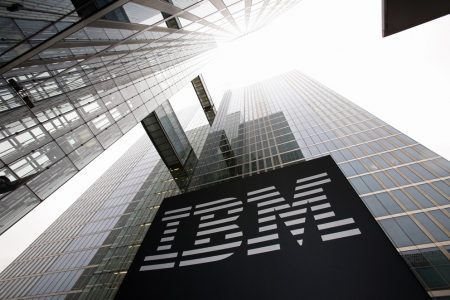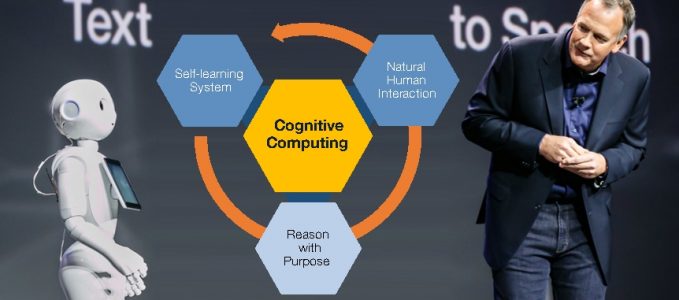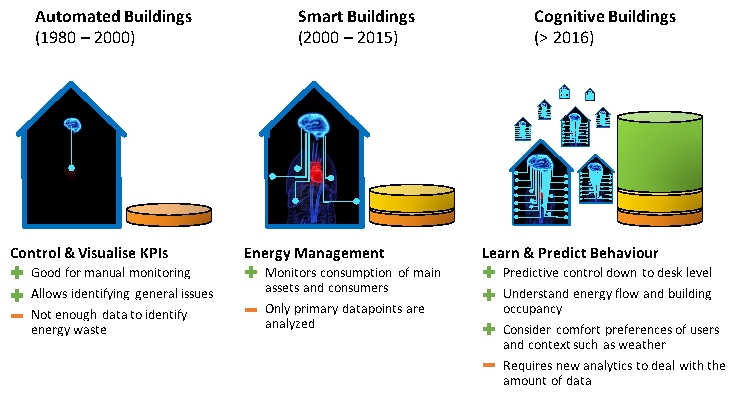Cognitive buildings
Issue :
read all articles online
read as pdf
Cognitive buildings are the next generation of sustainable building systems as they automatically integrate, analyse and learn from the vast amount of IoT generated data within a building and its environment. As a result, the building itself becomes an assistant and strives to improve user satisfaction, driving down costs and enabling new innovative collaborative services. The development of cognitive buildings is made possible by the recent advancement and convergence of multiple technologies.
EnOcean Alliance – enabling self-powered cognitive buildings
With the success of its wireless technologies and easy to fit battery-free sensors, the EnOcean Alliance is an advocate and large enabler of cognitive buildings. It leads to a new scale of deployments, enabling tens of thousands datapoints in both new and legacy buildings. This new granularity makes it possible to monitor and control the operation and comfort levels of a building environment right down to an individual workplace level.
Real time prediction
Recent major advances in machine-learning and AI technologies have enabled novel solutions that learn from vast amounts of data. As a result, cognitive buildings can anticipate the occupancy and operational requirements, they understand a building’s energetic behavior, and predict facility maintenance and outage needs. This helps facility managers and real estate executives to address the increasingly dynamic requirements from energy efficiency regulations, demand response, workplace sharing and facility management.
Interactive applications
These developments are accompanied by new mobile device interfaces and applications that enable users, from smart home owners to maintenance staff, to interact within the field or remotely from a system. In addition, we are also seeing the inclusion of augmented reality and speech interfaces that are enabling users to communicate with a building’s system in a more natural way.
Next generation cognitive building solution

IBM’s Watson IoT HQ in Munich is an example of a cognitive Building
IBM together with its partners have created this next generation cognitive building solution at its new global Watson IoT headquarters in Munich, Germany. The building’s AI integrates sensory data from thousands of devices including those of EnOcean via the IBM Watson IoT Platform coupled with a semantic modelling solution that incorporates data from The Weather Company, room booking systems and business operation tools all combining to unlock benefits across the buildings systems.
As a result, the solution automatically applies machine learning and reasoning to predict and optimize the energy consumption and maintenance needs of the building. It detects and diagnoses anomalies in realtime that allow for a timely reaction and efficient operation of the building. The system is aware of the building occupancy in meeting rooms and the environmental comfort levels at individual employee workplaces. Acting as the “cognitive assistant” the system can recommend vacant meeting rooms to fit to user expectations, while cognitive whiteboards capture and transcript meeting discussions for later usage. A mobile solution also allows users and operators to engage with the building’s AI via speech to be guided to rooms or assets, and they can use augmented reality to visualize insights about their environment and get advice in solving issues immediately.

Cognitive buildings autonomously integrate IoT devices and learn system and user behavior to optimize operation and provide assistance via natural user interfaces.
Enhanced building experience
Cognitive buildings like this will radically change the way all businesses operate and how people interact with their physical environments, to make buildings more comfortable, secure, personalised and efficient. This will lead to a transformation in business and an enhanced building experience.

Since the 1980s, the penetration of instrumentation and analytics has increased—smarter buildings have become the norm and the era of cognitive buildings is here.
New articles in Smart Spaces
Top articles





